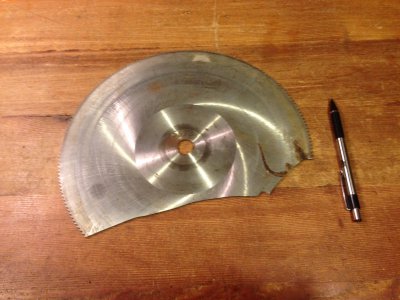+1 on the Evolution Rage style of saw. I've cut both 1/2 inch plate steel and 1/4 inch aluminum and assuming you take your time and just let the saw do the work it is spectacularly easy. The cuts are perfectly straight [assuming you use a straight edge to guide the saw] and dross free so you can begin welding almost immediately.
I happen to have the Northern Tool clone ... http://www.northerntool.com/shop/tools/product_200313572_200313572 ... and found it to be an excellent value but do have concerns about getting parts for it. I have already had minor problems in that regard ... not show-stoppers but annoyances ... but that is a Northern Tool issues and has nothing to do with the 5 star rating for the Evolution Rage style of saw
I happen to have the Northern Tool clone ... http://www.northerntool.com/shop/tools/product_200313572_200313572 ... and found it to be an excellent value but do have concerns about getting parts for it. I have already had minor problems in that regard ... not show-stoppers but annoyances ... but that is a Northern Tool issues and has nothing to do with the 5 star rating for the Evolution Rage style of saw


